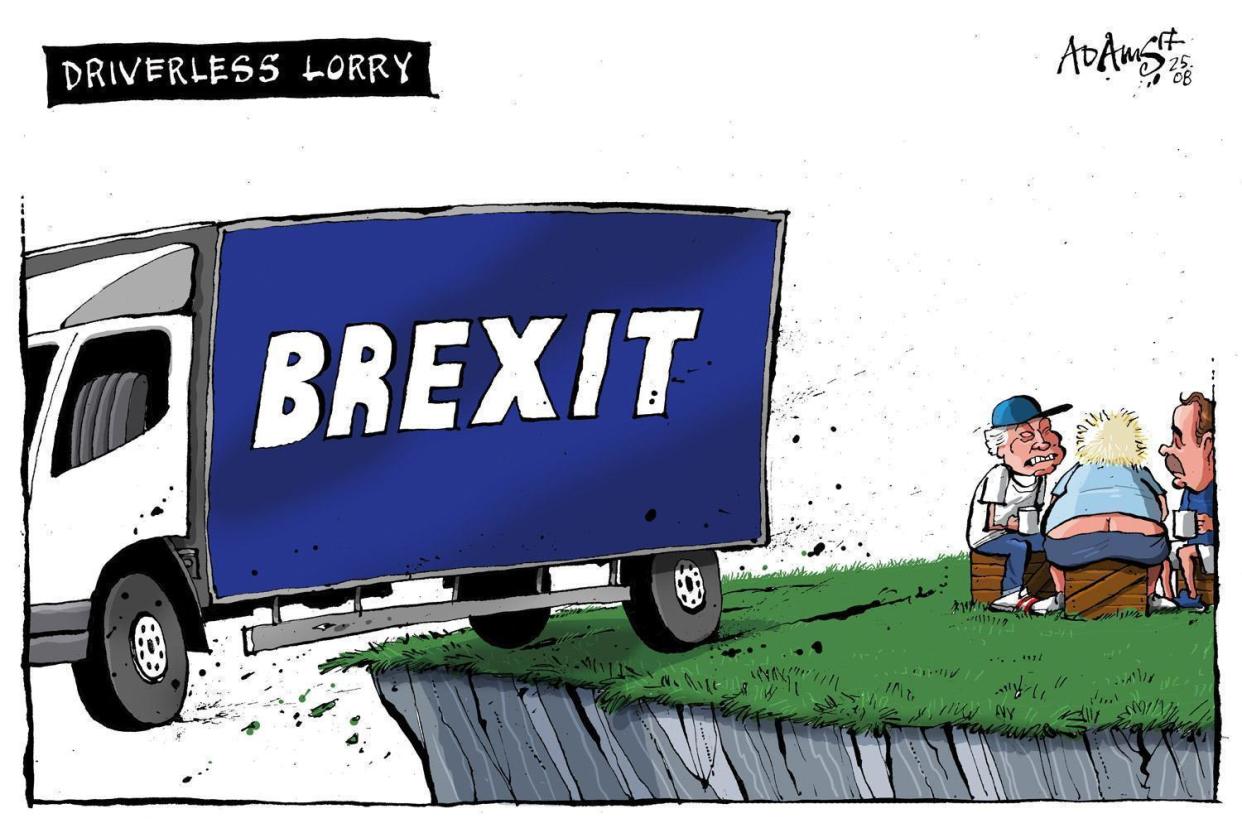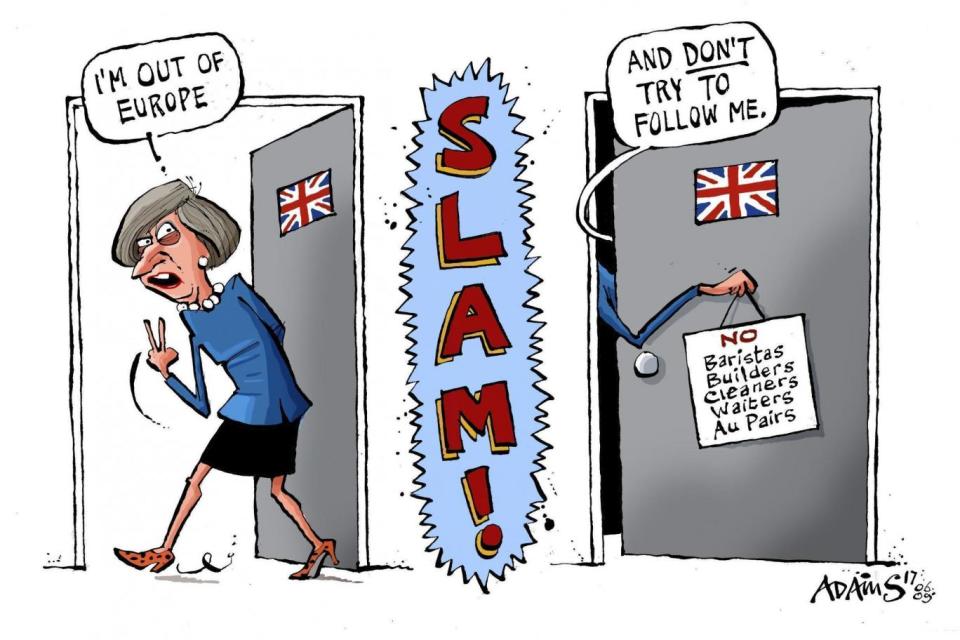Kenneth Baker: Cartoons hit the mark and Brexit is the perfect subject

Today, one of the great political cartoonists, Gerald Scarfe, appears in this paper. He joins the excellent Christian Adams, a welcome return of the genre to the Evening Standard.
Political cartooning was invented in London in mid-18th century. Hogarth, Gillray and Rowlandson ridiculed leading politicians and royalty in a blunt, funny way. They got away with it because there was no censorship in England — on the Continent, cartoonists who attacked the French kings ended up in the Bastille.
Cartooning flourished here because of the freedom of the press. The first cartoon of prime minister Robert Walpole was a picture of his bottom straddling the doors of the Treasury — you had to kiss it to get on.
The cartoonists of the 18th century were explicit. There were lots of bare bottoms, bare breasts and hands up skirts. The mighty were shown belching, farting, fornicating. In Victorian times fathers did not want their daughters to see such vulgarity so Punch cleaned up the cartoon. Today’s cartoonists are much closer to the style of the 18th century.
In the 1930s, when Beaverbrook owned this paper, he employed great cartoonists: Low, Vicky, Cummings and Jak. Beaverbrook did not care that Low and Vicky were well to the Left; he never censored their work.
David Low, a passionate opponent of appeasement, attacked Neville Chamberlain when the feeling in the country was not hostile to Hitler. His cartoons in the Standard alerted the public to the nature of Nazism.

Vicky was a refugee from Hungary. When Harold Macmillan, an Edwardian figure, became the Tory Prime Minister in 1957, Vicky depicted him as “Supermac”. This improved Macmillan’s reputation and helped him to victory two years later. Jak drew the Thatcher years.
A good cartoon can say much more than columns of writing. Cartoonists today know they will not be sued for libel and so their cartoons can be visual invective, going much further than the written word. By being amusing and acerbic, the cartoonist uses humour to great effect: it is laughter that can ruffle the mighty and puncture the pompous.
Politicians love to be cartooned in a paper such as this. But cartoonists like to draw blood. David Cameron did not like to see himself as a condom. I don’t think Mrs May likes to be recognised just for her shoes.
Today Brexit is a wonderful opportunity for cartoonists, with recognisable figures such as Boris and Angela Merkel, so expect a lot more laughs from Christian Adams and Gerald Scarfe — a great team for poking fun at the mighty.
Today you can enjoy British cartoons at The Cartoon Museum in Bloomsbury. It sends out people happier than when they entered.

 Yahoo News
Yahoo News 
